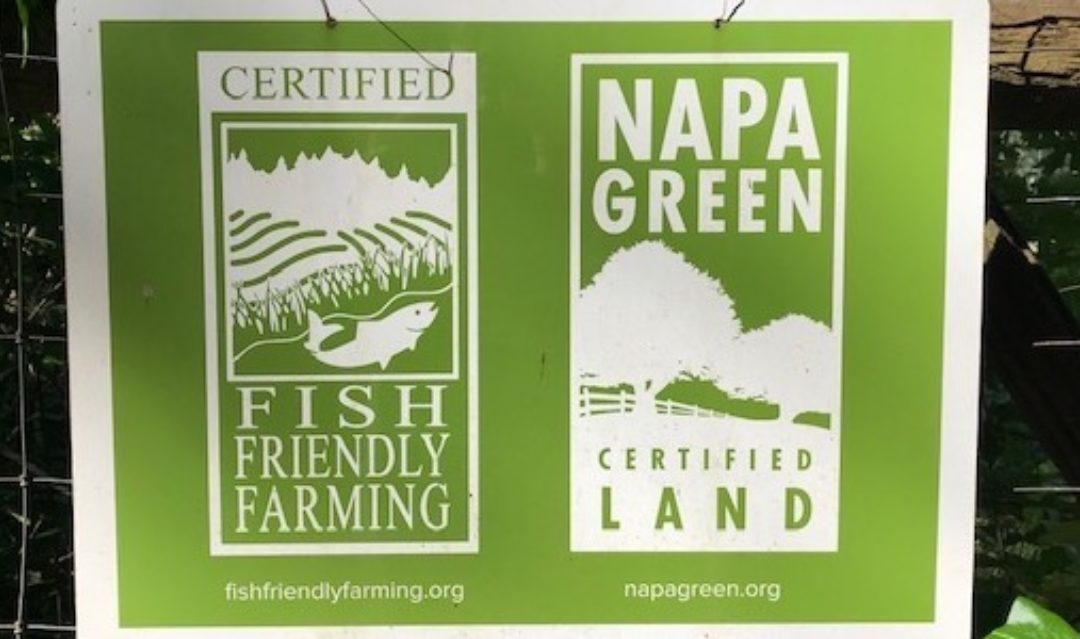Eric Asimov wrote recently in the New York Times about how vineyards and wineries, including Diamond Mountain wineries, can embrace practices that lower their carbon footprint. We decided it would be interesting to take his challenge and put our “green-ness” to the test.
In the vineyard the issues are till or no till, fertilizer and pesticide use… and water. At Dyer Vineyard we are “no till” and use a covercrop. Our covercrop has clover in the mix, which is nitrogen fixing, eliminating the need for fertilization, and we mow rather than till, keeping carbon on the ground and protecting soil moisture. We weed whack under the vines, avoiding the use of herbicides. We’ve reduced the number of sprays to combat mildew, and, on the water side, we’ve come close to achieving dry farming . Dyer Vineyard is certified by two local organizations, Napa Green and Fish Friendly Farming, as following specified environmentally sustainable practices.
As Asimov points out, it gets a little thornier on the winemaking side, where glass and corks and transportation make it harder to eliminate ones footprint with out radical change (Diamond Mountain Cabernet Sauvignon in cans isn’t catching on for our ultra premium Napa Valley Cabernet Sauvignons!). However, we have never used heavy bottles and are happy to see the trend going against the waste that they create. We ship in cardboard with a high percentage of recycled material. And, our Diamond Mountain winery is all underground in caves where the need for temperature control is minimized. Finally, if we count ourselves as part of the terroir, some of our efforts at lowering our carbon footprint is in the rammed earth house we built (no air conditioning required), with solar panels that supply our electrical needs, which include charging one electric car and one plug-in hybrid. Not a perfect score, but one we can be proud of as we look for other ways to minimize our carbon footprint so you can better enjoy our Diamond Mountain Cabernet Sauvignon with peace of mind.

